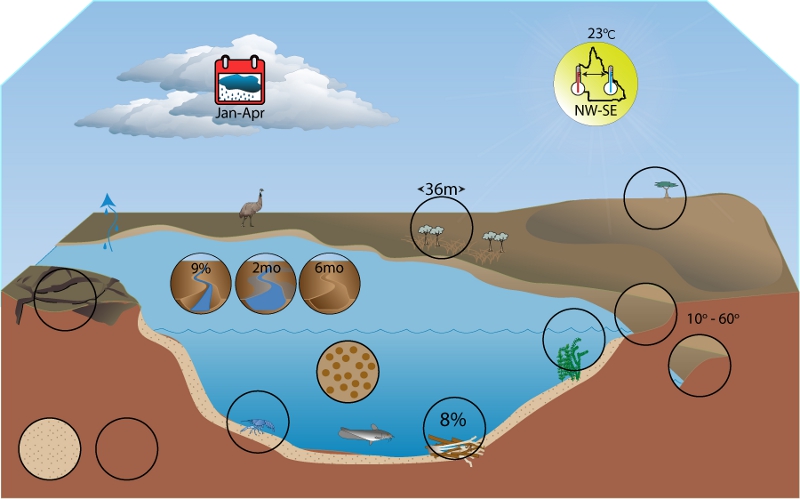|
|
Queensland Lake Eyre and Bulloo Freshwater Biogeographic ProvinceQueensland Lake Eyre and Bulloo Freshwater Biogeographic Province – Introduced fauna—riparian Click on elements of the model or select from the tabs below
Feral animals and livestock can damage riparian zones, banks, edge habitat and dry stream beds while accessing water and other resources. Pugging, rooting and trampling can accelerate erosion and alter instream sediment dynamics. Soil compaction can also occur along stock trails, reducing water infiltration whilst increasing run-off.
Feral pigs consume native aquatic plants and animals such as freshwater mussels and blueclaw crayfish.
Dry stream beds provide habitat for invertebrates. These communities reflect the health of dry stream ecosystems.
Altered instream habitat can lead to changes in the structure and function of ecological communities and ecosystem processes. Last updated: 22 May 2014 This page should be cited as: Department of the Environment, Tourism, Science and Innovation, Queensland (2014) Queensland Lake Eyre and Bulloo Freshwater Biogeographic Province – Introduced fauna—riparian, WetlandInfo website, accessed 15 December 2025. Available at: https://wetlandinfo.detsi.qld.gov.au/wetlands/ecology/aquatic-ecosystems-natural/riverine/freshwater-biogeo/lake-eyre-and-bulloo/rfauna.html |

 — Department of the Environment, Tourism, Science and Innovation
— Department of the Environment, Tourism, Science and Innovation









